Volume 9-14 (2020-26)
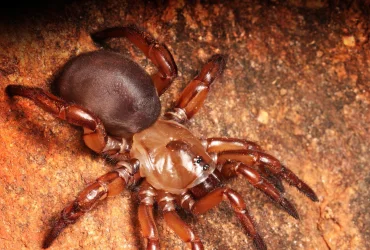 v14i1.355
v14i1.355eISSN: 1800-427X (online)
DOI:10.47605/tapro.v14i1.355
Submitted date: 16 December 2024
Accepted date: 21 February 2025
Published date: 31 May 2025
Pp. 71–74.
Pelung chicken research: A bibliometric analysis from 2010 to 2024
R.F. Yuneldi*, A.Y. Prawira, C.M. Airin, S. Sarmin & P. Astuti
*Corresponding author. E-mail: rizk056@brin.go.id
Pelung chicken, Gallus gallus gallus (Linnaeus, 1758), is an Indonesian endemic species of poultry from Cianjur, West Java. The characteristics of the Pelung chicken are that it has (1) a distinctive voice of long duration, (2) relatively fast growth, and a large physical shape, (3) good meat quality, which can be seen from the improvement in muscle mass and strength, and (4) growth performance in line with high testosterone levels. This species has been defined under the 2918/kpts OT.140/6/2011 decree issued by the Ministry of Agriculture as a native Indonesian free-range chicken that is to be protected and conserved, as well as a national asset. The chicken is reportedly threatened due to decreased population size.
Section Editor: José M. Saiz-Alvarez
DOI:10.47605/tapro.v14i1.355
Submitted date: 16 December 2024
Accepted date: 21 February 2025
Published date: 31 May 2025
Pp. 71–74.
Pelung chicken research: A bibliometric analysis from 2010 to 2024
R.F. Yuneldi*, A.Y. Prawira, C.M. Airin, S. Sarmin & P. Astuti
*Corresponding author. E-mail: rizk056@brin.go.id
Pelung chicken, Gallus gallus gallus (Linnaeus, 1758), is an Indonesian endemic species of poultry from Cianjur, West Java. The characteristics of the Pelung chicken are that it has (1) a distinctive voice of long duration, (2) relatively fast growth, and a large physical shape, (3) good meat quality, which can be seen from the improvement in muscle mass and strength, and (4) growth performance in line with high testosterone levels. This species has been defined under the 2918/kpts OT.140/6/2011 decree issued by the Ministry of Agriculture as a native Indonesian free-range chicken that is to be protected and conserved, as well as a national asset. The chicken is reportedly threatened due to decreased population size.
Section Editor: José M. Saiz-Alvarez
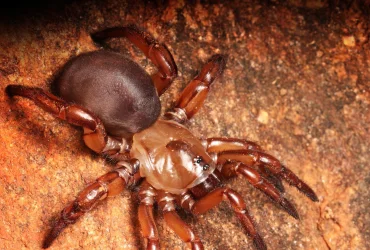 v14i1.354
v14i1.354eISSN: 1800-427X (online)
DOI:10.47605/tapro.v14i1.354
Submitted date: 7 October 2024
Accepted date: 21 April 2025
Published date: 31 May 2025
Pp. 69–70.
Unusual nest construction by cinereous tit (Parus cinereus) in an artificial nest box
M. Bilaskar*
*Corresponding author. E-mail: rishi08sep@gmail.com
The cinereous tit, Parus cinereus Vieillot, 1818 is the descendant subspecies of the great tit (Parus major), which it was included with until it was recognised as a separate subspecies. The nesting behaviour of the cinereous tit is characterized by its preference for cavity nesting. These birds typically choose tree hollows, crevices in rocks, or even man-made structures such as walls and pipes for nesting. During the breeding season, which generally occurs from March to July, the female cinereous tit plays a dominant role in nest construction. In urban settings, they may use synthetic materials such as pieces of cloth or plastic. The typical clutch size ranges from 4 to 8 eggs, with incubation lasting about 12 to 14 days. Both parents are involved in feeding the chicks, with the fledging period extending for approximately 16 to 20 days.
Section Editor: Xu Luo
DOI:10.47605/tapro.v14i1.354
Submitted date: 7 October 2024
Accepted date: 21 April 2025
Published date: 31 May 2025
Pp. 69–70.
Unusual nest construction by cinereous tit (Parus cinereus) in an artificial nest box
M. Bilaskar*
*Corresponding author. E-mail: rishi08sep@gmail.com
The cinereous tit, Parus cinereus Vieillot, 1818 is the descendant subspecies of the great tit (Parus major), which it was included with until it was recognised as a separate subspecies. The nesting behaviour of the cinereous tit is characterized by its preference for cavity nesting. These birds typically choose tree hollows, crevices in rocks, or even man-made structures such as walls and pipes for nesting. During the breeding season, which generally occurs from March to July, the female cinereous tit plays a dominant role in nest construction. In urban settings, they may use synthetic materials such as pieces of cloth or plastic. The typical clutch size ranges from 4 to 8 eggs, with incubation lasting about 12 to 14 days. Both parents are involved in feeding the chicks, with the fledging period extending for approximately 16 to 20 days.
Section Editor: Xu Luo
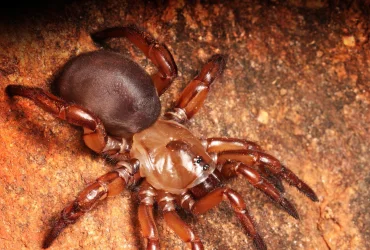 v14i1.353
v14i1.353eISSN: 1800-427X (online)
DOI:10.47605/tapro.v14i1.353
Submitted date: 12 December 2023
Accepted date: 21 April 2025
Published date: 31 May 2025
Pp. 65–68.
Apoptosis-associated gene expression in Javaen barb (Systomus orphoides) sperm
S.W.R. Hilia, A. Abinawanto*, A. Dwiranti, A. Bowolaksono, R. Lestari, F. Fadhilah, A.H. Kristanto, R.R.S.P.S. Dewi & E. Kusrini
*Corresponding author. E-mail: abinawanto.ms@sci.ui.ac.id
The preservation of fish sperm is still an area of research that is being developed. This technology has emerged as a widely used method for implementing artificial fertilization of species of economic significance, endangered species, or animals with unique genotypes. During the preservation process, fish sperm are exposed to significant temperature decline (cold stress). Cold stress commonly leads to the production of reactive oxygen species (ROS). Cold stress caused by preservation has been reported as a major contributing factor to inducing apoptosis in sperm.
Section Editor: Ian A.E. Butts
DOI:10.47605/tapro.v14i1.353
Submitted date: 12 December 2023
Accepted date: 21 April 2025
Published date: 31 May 2025
Pp. 65–68.
Apoptosis-associated gene expression in Javaen barb (Systomus orphoides) sperm
S.W.R. Hilia, A. Abinawanto*, A. Dwiranti, A. Bowolaksono, R. Lestari, F. Fadhilah, A.H. Kristanto, R.R.S.P.S. Dewi & E. Kusrini
*Corresponding author. E-mail: abinawanto.ms@sci.ui.ac.id
The preservation of fish sperm is still an area of research that is being developed. This technology has emerged as a widely used method for implementing artificial fertilization of species of economic significance, endangered species, or animals with unique genotypes. During the preservation process, fish sperm are exposed to significant temperature decline (cold stress). Cold stress commonly leads to the production of reactive oxygen species (ROS). Cold stress caused by preservation has been reported as a major contributing factor to inducing apoptosis in sperm.
Section Editor: Ian A.E. Butts
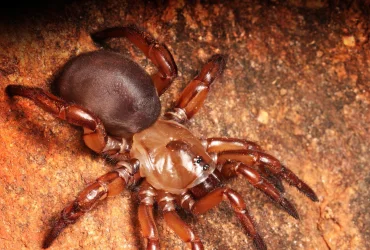 v14i1.352
v14i1.352eISSN: 1800-427X (online)
DOI:10.47605/tapro.v14i1.352
Submitted date: 28 August 2024
Accepted date: 25 April 2025
Published date: 27 May 2025
Pp. 58–64.
SYSTEMATICS OF Heimioporus retisporus (PAT. & C.F. BAKER) E. HORAK (AGARICOMYCETES: BOLETACEAE), AN EDIBLE WILD MUSHROOM FROM SOUTHEAST SULAWESI, INDONESIA
Ivan P. Putra*, Oktan D. Nurhayat, Sitti A.A. Taridala, Elis N. Herliyana, Anastasia T. Hartati & Andi B. Patadjai
*Corresponding author. E-mail: ivanpermanaputra@apps.ipb.ac.id
Abstract
The genus Heimioporus was previously proposed as Heimiella by Boedijn from Indonesian specimens. Currently, the knowledge of Indonesian Heimioporus is limited due to a lack of field sampling. The only notable Heimioporus from Indonesia is jamur pelawan (local name), a wild edible mushroom from Bangka-Belitung Province, for which the taxonomical identity remains unclear. During a mushroom collecting field trip near Kendari (Indonesia) in 2024, a wild edible bright red bolete mushroom resembling Heimioporus was encountered, and specimens were collected. The current study confirms the taxonomical identity of our specimens. Fresh fruiting bodies were evaluated for morphological and molecular evidence. The basidiomata were described based on the macro- and micromorphological characteristics. Molecular analysis and phylogenetic tree construction were performed using the ITS (Internal Transcribed Spacer) locus. The combination of morphological and molecular analyses confirmed our collection as H. retisporus. Our study proves that the previous Indonesian Heimioporus collection from Bangka-Belitung Province was not H. retisporus. The indigenous people in the area where H retisporus was collected consume this wild edible mushroom and sell it at local markets.
Key words : Basidiomycota, Fungi, Hemioporus, Heimiella, morphology, phylogeny, taxonomy
Section Editor: Samantha C. Karunarathna
DOI:10.47605/tapro.v14i1.352
Submitted date: 28 August 2024
Accepted date: 25 April 2025
Published date: 27 May 2025
Pp. 58–64.
SYSTEMATICS OF Heimioporus retisporus (PAT. & C.F. BAKER) E. HORAK (AGARICOMYCETES: BOLETACEAE), AN EDIBLE WILD MUSHROOM FROM SOUTHEAST SULAWESI, INDONESIA
Ivan P. Putra*, Oktan D. Nurhayat, Sitti A.A. Taridala, Elis N. Herliyana, Anastasia T. Hartati & Andi B. Patadjai
*Corresponding author. E-mail: ivanpermanaputra@apps.ipb.ac.id
Abstract
The genus Heimioporus was previously proposed as Heimiella by Boedijn from Indonesian specimens. Currently, the knowledge of Indonesian Heimioporus is limited due to a lack of field sampling. The only notable Heimioporus from Indonesia is jamur pelawan (local name), a wild edible mushroom from Bangka-Belitung Province, for which the taxonomical identity remains unclear. During a mushroom collecting field trip near Kendari (Indonesia) in 2024, a wild edible bright red bolete mushroom resembling Heimioporus was encountered, and specimens were collected. The current study confirms the taxonomical identity of our specimens. Fresh fruiting bodies were evaluated for morphological and molecular evidence. The basidiomata were described based on the macro- and micromorphological characteristics. Molecular analysis and phylogenetic tree construction were performed using the ITS (Internal Transcribed Spacer) locus. The combination of morphological and molecular analyses confirmed our collection as H. retisporus. Our study proves that the previous Indonesian Heimioporus collection from Bangka-Belitung Province was not H. retisporus. The indigenous people in the area where H retisporus was collected consume this wild edible mushroom and sell it at local markets.
Key words : Basidiomycota, Fungi, Hemioporus, Heimiella, morphology, phylogeny, taxonomy
Section Editor: Samantha C. Karunarathna
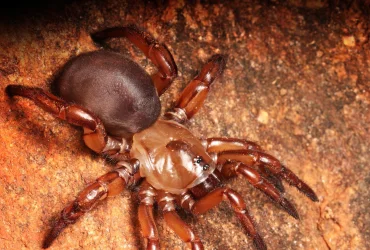 v14i1.351
v14i1.351eISSN: 1800-427X (online)
DOI:10.47605/tapro.v14i1.351
Submitted date: 7 June 2024
Accepted date: 25 April 2025
Published date: 26 May 2025
Pp. 48–57.
MORPHOLOGICAL CHARACTERIZATION OF CHILI LANDRACES WITH PHARMACEUTICAL POTENTIAL IN NORTHEAST INDIA
Marcus Vanlalremruatsaka, P.C. Lalrinfela, Rebecca Vanlalsangi, K. Zosangpuii, Fanai Lalsangluaii, Lalrosangpuii, Mathipi Vabeiryureilai*, Maria Lalhmingmawii, David Rosangliana & Samuel Lallianrawna
*Corresponding author. E-mail: m.vabeiryureilai@gmail.com
Abstract
Chili (Capsicum spp.) is a globally important crop valued for its culinary and pharmaceutical properties, particularly its capsaicin content. Mizoram, in Northeast India, is a recognized center of chili diversity, yet its native landraces remain under-characterized. This study aimed to identify and characterize 14 chili landraces collected from various sites across Mizoram, using morphological traits and capsaicin content as key parameters. Of the landraces examined, 12 were identified as C. frutescens and two as C. annuum. Cluster analysis based on 28 morphological traits grouped the landraces into two clusters with 36% similarity, confirming the usefulness of morphological descriptors for germplasm differentiation. All landraces exhibited high capsaicin content, with BC09 recording the highest (617.8 mg/100 g dry weight; 98,848 SHU) and BC12 the lowest (146.2 mg/100 g; 23,392 SHU). The findings underscore the exceptional pungency and morphological diversity of Mizoram's chili landraces and highlight their potential for pharmaceutical applications and elite breeding programs. This study provides a critical foundation for the taxonomic clarification, conservation, and global promotion of Mizoram chilies as regionally unique and commercially valuable genetic resources.
Key words : Capsaicin, capsicum, dendrogram, landrace, estimation, morphology, varieties
Section Editor: Carlos I. Arbizu
DOI:10.47605/tapro.v14i1.351
Submitted date: 7 June 2024
Accepted date: 25 April 2025
Published date: 26 May 2025
Pp. 48–57.
MORPHOLOGICAL CHARACTERIZATION OF CHILI LANDRACES WITH PHARMACEUTICAL POTENTIAL IN NORTHEAST INDIA
Marcus Vanlalremruatsaka, P.C. Lalrinfela, Rebecca Vanlalsangi, K. Zosangpuii, Fanai Lalsangluaii, Lalrosangpuii, Mathipi Vabeiryureilai*, Maria Lalhmingmawii, David Rosangliana & Samuel Lallianrawna
*Corresponding author. E-mail: m.vabeiryureilai@gmail.com
Abstract
Chili (Capsicum spp.) is a globally important crop valued for its culinary and pharmaceutical properties, particularly its capsaicin content. Mizoram, in Northeast India, is a recognized center of chili diversity, yet its native landraces remain under-characterized. This study aimed to identify and characterize 14 chili landraces collected from various sites across Mizoram, using morphological traits and capsaicin content as key parameters. Of the landraces examined, 12 were identified as C. frutescens and two as C. annuum. Cluster analysis based on 28 morphological traits grouped the landraces into two clusters with 36% similarity, confirming the usefulness of morphological descriptors for germplasm differentiation. All landraces exhibited high capsaicin content, with BC09 recording the highest (617.8 mg/100 g dry weight; 98,848 SHU) and BC12 the lowest (146.2 mg/100 g; 23,392 SHU). The findings underscore the exceptional pungency and morphological diversity of Mizoram's chili landraces and highlight their potential for pharmaceutical applications and elite breeding programs. This study provides a critical foundation for the taxonomic clarification, conservation, and global promotion of Mizoram chilies as regionally unique and commercially valuable genetic resources.
Key words : Capsaicin, capsicum, dendrogram, landrace, estimation, morphology, varieties
Section Editor: Carlos I. Arbizu
Hubungi Kami
The ultimate aim of the journal is to provide an effective medium for communication of the latest and best scientific information.
Copyright © 2020 Taprobanica. All Rights Reserved
Jasa Pembuatan Website by IKT




